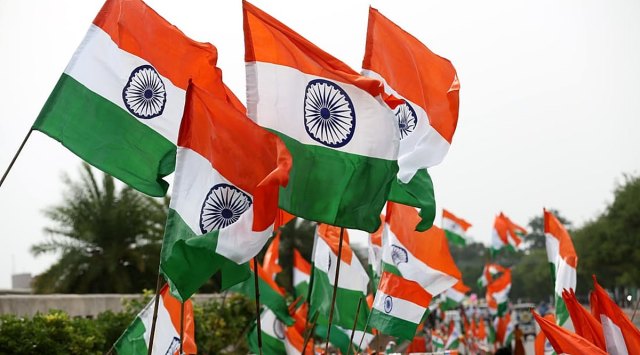National Flag Day in India 2025: Know the date, history, significance, and more
National Flag Day in India 2025: On July 22, 1947, the Constituent Assembly of India officially adopted the Indian National Flag, known as the Tiranga, which means Tricolour.
 National Flag Day in India 2025: Here's all you need to know. (Express Photo)
National Flag Day in India 2025: Here's all you need to know. (Express Photo)Every year on July 22, India commemorates National Flag Day, also known as Tiranga Adoption Day. This year, it’s being observed on July 22, 2025, falling on Tuesday.
On July 22, 1947, the Constituent Assembly of India officially adopted the Indian National Flag, known as the Tiranga, which means Tricolour.
The history of the Indian national flag:
The Indian flag evolved over time, with various designs proposed and used during the freedom struggle, with the earliest flag, created by Sister Nivedita in 1904, featuring red and yellow colours symbolising victory and power, with “Vande Mataram” inscribed in Bengali.
After several modifications over the years, the present-day flag, the “tiranga” was adopted with three coloured stripes – saffron, white, and green – and the Ashoka Chakra replacing the charkha as the national emblem, was officially adopted on July 22, 1947.
 The History of the National Flag of India (Designed by: Abhishek Mitra)
The History of the National Flag of India (Designed by: Abhishek Mitra)
On August 15, 1947, India gained independence and Jawaharlal Nehru, the first Prime Minister of Independent India, hoisted the Tricolour, the national flag of India, for the first time.
National Flag Day instills a sense of pride, patriotism, and national unity among citizens, while encourages reflection on civic responsibilities, upholds the dignity of the national flag, as outlined in the Flag Code of India, and abides by its values.
Each colour in the Indian national flag has a significant meaning which reflects the country’s values and aspirations, while highlighting the sacrifices and struggles of countless freedom fighters who laid down their lives for India’s independence.
- The top band of saffron stands for the bravery and sacrifices of freedom fighters.
- The middle band in white stands for purity, truth, and peace.
- The bottom band in green stands for fertility, growth, and fortune while also reflecting India’s agricultural heritage and commitment to protecting the environment.
- The navy blue wheel chakra in middle, known as the “wheel of law”, symbolises the continuous movement of life and highlight on the importance of a nation progressing and advancing.
On this day, schools, government institutions, and various organisations often conduct ceremonies and educational programmes to raise awareness about the flag’s history, symbolism, and the rules for its display.
- 01
- 02
- 03
- 04
- 05





























